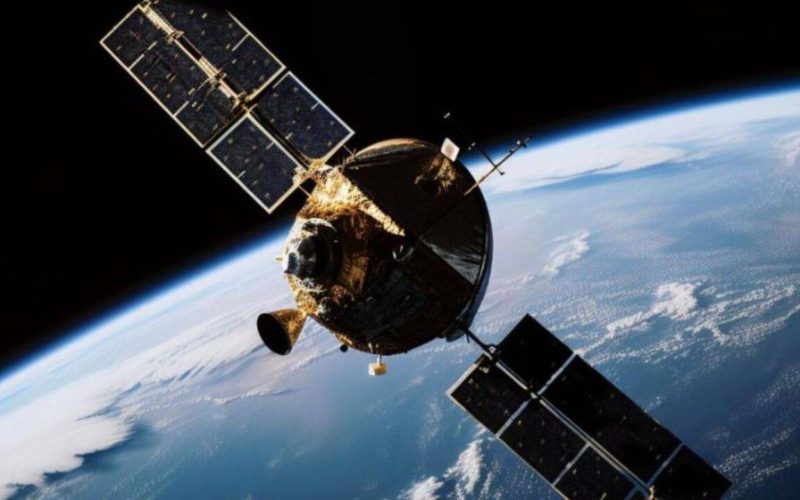India’s top telecom operators—Reliance Jio, Bharti Airtel, and Vodafone Idea—are rallying together to demand that new satellite communication, satcom entrants pay market-aligned prices for spectrum. This move comes as these telcos contend with declining user numbers following recent tariff hikes and work to protect their significant investments in terrestrial networks.
At the same time, India’s telecommunications sector is rapidly evolving as major global players like Elon Musk’s Starlink and Amazon’s Kuiper express interest in offering broadband services in the country.
Telcos, represented by the Cellular Operators Association of India (COAI), are expected to formally submit their stance to the Telecom Regulatory Authority of India (TRAI), emphasizing the need for equal competition standards. The COAI’s submission, due by October 25, seeks regulatory guidance on maintaining fairness in the burgeoning satcom sector and ensuring that satellite and terrestrial networks operate on a level playing field.

The Core Demand
To establish a fair competitive market, top telecom operators are advocating for satcom companies to be held to market-driven spectrum pricing, which has been a significant cost for terrestrial networks.
COAI’s position is grounded in the principle of “same service, same rules,” which would require satcom operators, such as Starlink and Kuiper, to adhere to the same spectrum pricing and regulatory fees as terrestrial operators when offering similar retail or enterprise services.
The COAI is also expected to suggest that market-based auctions be considered to determine fair pricing for mobile satellite service spectrum, especially since this spectrum will be exclusively assigned, which could limit future competition and innovation in the industry.
A Historic Shift in Industry Standpoints
For the first time, Bharti Group has joined the call for auction-based spectrum allocation for satellite communications while Reliance Jio has advocated for a nationwide auction of satellite spectrum, Airtel supports an auction primarily for administrative allocation in remote areas that lack connectivity options.
COAI appears to support a differentiated pricing model, suggesting that administrative pricing be reserved for satcom services designed for non-retail and specialized government uses, such as defence and disaster response.
Services that do not directly compete with terrestrial networks—such as those used by geostationary orbit satellites for VPN, CUG-based communications, cellular backhaul, or point-to-point links in rural areas—would qualify for administrative pricing under the COAI proposal. Conversely, satellite-based fixed and mobile services targeting retail and enterprise customers would follow market-determined pricing, aligning with existing terrestrial network standards.
Satcom as a Competitor, Not a Complementary Service
The telcos outline that the satellite sector, once viewed as a complementary service, now directly competes with terrestrial networks by offering high-speed broadband and voice communication directly to consumers.
This shift poses a competitive challenge to terrestrial telecom providers, who are concerned about potential market share losses. According to industry executives, the telcos argue that satcom operators are building capabilities that rival those of India’s leading terrestrial operators, offering services that closely mirror traditional broadband, internet, and mobile options.
Current Satcom Licenses and Future Prospects
Presently, the Bharti-backed Eutelsat OneWeb and Reliance Jio’s satellite subsidiary have obtained domestic satcom licenses, while Amazon’s Kuiper and SpaceX’s Starlink await regulatory approvals to operate in India. Starlink, meanwhile, is accelerating its rollout, having deployed over 200 satellites for direct-to-cell connectivity and enhancing its service portfolio.
TRAI Recommendations and Industry Discussions
As the industry awaits TRAI’s recommendations on the future of satcom, an open-house discussion is scheduled for November 8. This session will provide a platform for industry stakeholders, including telcos and satcom operators, to discuss regulatory frameworks, spectrum pricing, and fair competition guidelines.
The outcome of this discussion could set a precedent for how satellite-based and terrestrial telecommunications networks coexist, potentially reshaping India’s digital sector.

Tariff Hikes Trigger Subscriber Losses for India’s Top Telcos in August
Meanwhile, India’s leading telecom operators, Reliance Jio, Bharti Airtel, and Vodafone Idea (Vi), saw significant subscriber losses for the second consecutive month in August, following substantial tariff hikes implemented in early July.
According to data from the Telecom Regulatory Authority of India (TRAI), these price increases, ranging from 11% to 25%, led to notable drops in user numbers for the three telecom giants.
Reliance Jio reported the largest subscriber loss, with 4.01 million users leaving in August compared to the previous month. Airtel experienced a decline of 2.4 million subscribers, and Vodafone Idea lost 1.8 million users.
In contrast, state-run Bharat Sanchar Nigam Limited (BSNL), which opted not to raise its tariffs, was the only operator to add subscribers, gaining 2.5 million new users during the month.
As of August, Jio’s total subscriber base fell to 471.74 million, while Airtel’s decreased to 384.91 million, and Vodafone Idea’s dropped to 214 million.
The TRAI data also revealed a drop in the active user base, or Visitor Location Register (VLR) count, for all three private telcos. Airtel’s active user base declined by 1.67 million to 381.99 million, while Jio saw a 2.6 million reduction, falling to 181.63 million active users. However, Jio’s active user base rose to 442.76 million, adding approximately 2.03 million subscribers by August’s end.
India’s overall wireless subscriber base declined as well, dropping from 1.169 billion in July to 1.163 billion in August—a 0.49% decrease. Urban wireless users fell to 633.21 million from 635.46 million, and the rural user base decreased to 530.63 million from 534.15 million.
The data indicates the sensitivity of the telecom market to pricing changes, as customers reconsider service options following tariff adjustments.
Snapshot
As satellite operators look to expand their footprint in India’s connectivity ecosystem, India’s top telcos are determined to protect their investments and ensure fair market practices.
Hence, with TRAI’s upcoming recommendations and regulatory decisions, the stage is set for a transformative period in the nation’s telecommunications industry, as both terrestrial and satellite operators vie for a piece of the country’s vast and dynamic digital economy.









